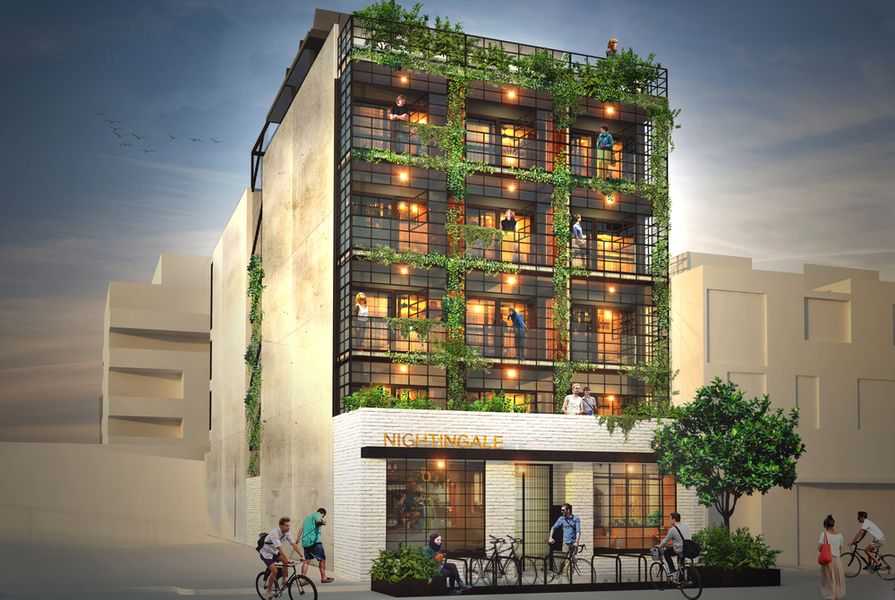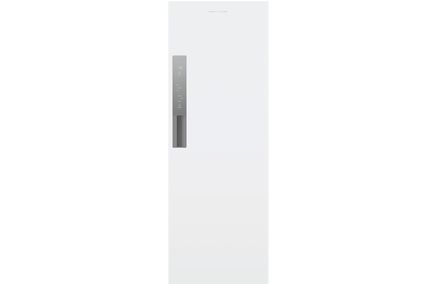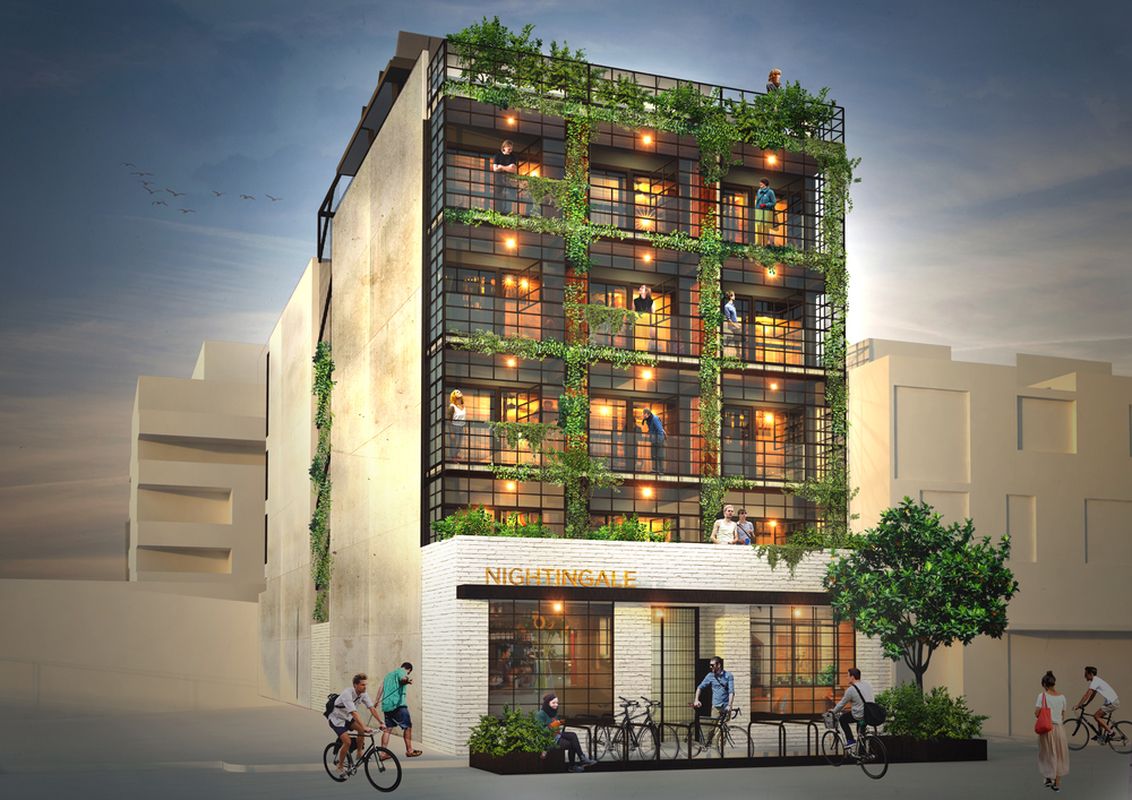The Victorian Civil and Administrative Tribunal (VCAT) has revoked a planning permit granted to The Nightingale, an architect-led apartment development in Brunswick, Melbourne. The decision, made by VCAT senior member Russell Byard, was based on the lack of car parking provision in the proposed development.
The Nightingale (6 Florence Street, Brunswick) designed by Breathe Architecture is billed as a sustainable and affordable development model where purchasers can benefit from cost savings through the elimination of car parking.
The development is located next to a train station, a bicycle path and within walking distance of trams. It was expected to include bike parking, a shared car facility as well as a green travel fund to cover the cost of public transport, administered through the body corporate.
In his ruling, Byard conceded that “there are households without privately owned motor cars for whom private car parking spaces are irrelevant” but decided that “it is not necessary to have parking free developments to accommodate them.”
Byard argued that while the first generation of The Nightingale residents had all been vetted and do not require car parking spaces, successive generations of residents may require car parking. He said that private car ownership offers benefits of convenience both for the residents and visitors. “Indeed, over the last century, private cars have been liberating to many people, particularly the less well to do, who could never afford private transport by means of horses (with their upkeep) or horse drawn vehicles,” he said. “Even a handy GoGet spot is not as convenient as one’s own car on hand to use at any time for any purpose.”
Byard was also not convinced by the benefits of either the nearby public transport options or the green travel plan. “Public transport is a less convenient option for visitors,” he said. “Someone visiting from North Balwyn or North Beaconsfield wanting to visit a child, friend or grandchild, or attend a bookclub or whatever at the Nightingale is likely to use a car on the basis that public transport is not available.”
The Nightingale is situated one block west of two public car parks behind Brunswick market.
Byard also said the proposed green travel plans would be “administratively burdensome for the future body corporate” and that “such body corporate may or may not prove willing to sustain such arrangements over the long term.”
In spite of the Nightingale’s proximity to public transport and the green travel plan, Byard ruled the “relative degrees of greenness […] are not a satisfactory answer in relation to the specific problems raised in relation to car parking.”
Roz Hansen, planning expert and chairperson of the Victorian government’s Ministerial Advisory Committee for Plan Melbourne, said the decision was “pretty concerning.”
“The site actually ticks all of the strategic boxes in terms of the integration of land use, transport, particularly active transport, and [when] we get caught up on the fact that a development doesn’t have two or three car park spaces, my view is we’re losing the plot,” Hansen told ArchitectureAU.
Byard’s decision also directly contravenes an earlier VCAT decision made in 2012 by the member G Rundell in the case of Frydman v Port Phillip CC, which was deemed a “Red Dot Decision,” or of interest or significance to the planning community. That case involved a Breathe Architecture-designed apartment development in St Kilda, which proposed “to be a ‘best practice’ sustainable development.” The tribunal concluded that “a waiver of parking for dwellings is to be an important component of the sustainable concept.”
Both developments were located within major activity centres and in close proximity to active modes of transport (public transport, walking, cycling). Both had provision of bike parking, shared car facilities and green travel plans. In both cases, residents who will occupy the buildings were not expected to own, or need to own, cars.
However, despite the similarities in these cases, VCAT senior member Byard deemed the design ethos of the Nightingale “irrelevant.”
Moreland City Council had unanimously voted to approve the development in March 2015, however, a neighbouring developer, Chaucer Enterprises, challenged the decision in VCAT.
In his decision, Byard sided with Chaucer Enterprises whose development (8 Florence Street) includes a five storey building designed by CHT Architects with 24 apartments and 18 car park spaces in the basement. The development is itself in dispute – Moreland City Council’s planning services list the application as “appealed.”
“Chaucer maintains that [the Nightingale], like other developments, should make a contribution towards meeting the parking demands it generates,” Byard said. “How can it be good planning or equitable in relation to Chaucer and other developers, that they should be required to contribute to the meeting of the parking demand they generate whilst the Nightingale is to be excused?”
But Hansen says Byard’s reasoning is flawed: “I don’t think we can come to any conclusions about the so called inequity. It may well be that those developers chose to provide parking because they were going to get a higher return on their apartments or their townhouses and that was the market that they were seeking to attract.”
Hansen believes that the Nightingale, or any other development with zero residential car parking provisions, is not likely to attract purchasers who either own cars or have an expectation to own cars. “Let’s not treat people like idiots,” she said. “Byard has not balanced the differing policy settings and, in my opinion, here lies the problem and inconsistencies in the VCAT process.”
She points out there are provisions within the current planning framework to allow councils and VCAT to accept zero car parking on a development, however, “there’s probably a need to strengthen the policy framework to be able to make it a lot clearer,” she said. “I think that we need to look seriously at either changing the policy, or introducing some provisions so that VCAT and council can feel more comfortable in making decisions where they do allow zero car parking.”
Breathe Architecture plans to resubmit the Nightingale with an addition of some car parking spaces on the ground floor.
Two further projects that follow the Nightingale model are in the pipeline, including a Six Degrees-designed building in Fairfield and a project led by Andrew Maynard Architects, which has secured $2 million from ethical investors for a development and is currently looking for a site.
Car parking in these future developments will be determined by prospective residents’ needs.
















